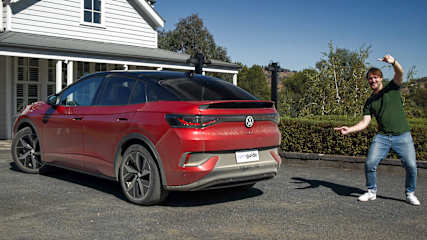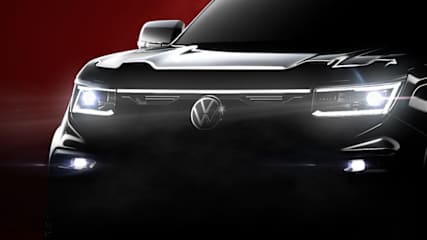'Medium SUV has to be the focus': 2025 VW ID.4 and ID.5 to remain German brand's only electric cars for the time being despite ID.3, ID.7 and more being available overseas to battle MG4, BYD Seal and more
By Tom White · 03 Apr 2025
Volkswagen Australia has confirmed its future EV plans.Speaking to CarsGuide at the launch of the ID.4 and ID.5 mid-size SUVs, Volkswagen’s Director of Passenger Cars, Piergiorgio Minto, and the product manager of the ID range, Arjun Nidigallu, explained why the brand wont rush to emulate its rivals like Kia, Hyundai, or MG into rapidly expanding its electric car portfolio.When asked about the potential of the also-long-awaited Golf-sized ID.3 hatchback to join the range, Minto said: “Medium SUV has to be the focus. “I believe that we need to stick with the ID.4 and ID.5, put them into the market, and see how the customer reacts.”“We’re continuing monitoring the possibilities, but medium SUV is the big one.”The brand has previously significantly delayed its range of ID electric vehicles, with the ID.4 itself having been pushed back more than four years, originally launching in Europe in 2020.The brand has previously confirmed the ID.3, delayed its launch prediction and has since gone cold on the idea of introducing the hatch to our market, despite it receiving a similar slew of upgrades to the ID.4, which it says is now much more appropriate for an Australian audience, thanks primarily to improved pricing and driving range, and a more powerful electric motor.Additionally, the ID.7 - effectively an electric sedan and wagon equivalent to the Passat - has been deemed out of consideration in previous comments by the brand, at least for the time being.Despite this seemingly measured approach to new electric models, VW claims it is all-in on electric vehicles, showing predictions that the market for EVs will continue to climb past the current plateau and be adopted by more mainstream buyers. To that end, the brand stressed a no for now on a car like ID.3 is not a no forever, as it continues to monitor the Australian market’s taste for electric vehicles.Nidigallu added the brand had also left the standard-range 52kWh version of the ID.4 available in Europe on the cutting room floor for the time being, but just because it had opted to go for long-range only as it is more suited to Australian conditions, didn’t mean it wasn’t open to bringing in an even more affordable version of the mid-sizer to our market in the future.“One of our big advantages is we have a lot of access to product,” he said, adding that Australia’s new vehicle efficiency laws (NVES), which put pressure on manufacturers to reduce their fleet C02 average have added additional negotiating for VW Australia, with its factory to provide more electric vehicles or variants if need be to meet the targets.Volkswagen, however, is already well positioned to survive the tough new emissions laws as its range of vehicles already comply with or exceed European regulations (Euro 6d) which have been in place for years, and which the new Australian laws emulate.Meanwhile, the pricing of the new ID.4 is a very deliberate and strategic move for VW as it attempts to establish itself in the electric mid-size SUV space against some now very well-entrenched competitors.Starting at $59,990 plus on-road costs, the single ID.4 Pro trim level available at launch is only $1090 more expensive than the incoming and deeply updated Tesla Model Y ($58,900 for a base RWD version) while offering at least similar specifications. It also measures up competitively with Kia’s EV5 (from $56,770), BYD’s Sealion 7 (from $54,990), and XPeng’s G6 (from $54,800).However, in this mid-size electric bracket it remains undercut by other newcomers, like Geely’s EX5 (from $40,990) and the Leapmotor C10 (from $43,888).In Q3 of 2025, Volkswagen will expand the range of its electric offering to include a dual-motor GTX version of the ID.4 and, conversely, a Pro rear-wheel-drive version of the ID.5. Prices are yet to be revealed, but expect them to mirror the prices of the current ID.5 GTX (from $72,990) and ID.4 Pro.Despite its buyers usually opting for the most upmarket trims, this time around VW is predicting the lion’s share of volume will be directed to the ID.5 Pro rather than the more performance-oriented GTX, in part thanks to its 544km (WLTP) driving range, which the brand said “breaks the psychological barrier” of range anxiety and makes it appeal more to existing buyers who might have usually opted for the most popular Tiguan 162TSI R-Line (from $60,590).Whether this strategy can pay off in such a competitive market remains to be seen.





.jpg)
.jpg)
.jpg)
.jpg)
.jpg)
.jpg)